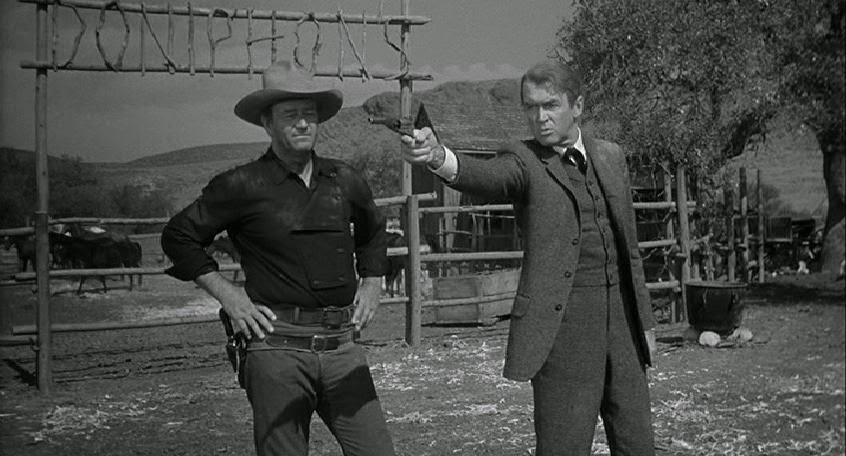Looking back on this year as a
casual film viewer, I have watched too many films. That's not to boast, but
having decided to stick to one film a day from the mid-year on, there's been an
apparent issue that many films, especially ones that are impossible to see on
physical media, I have proclaimed to be great from the early months have
vanished from memory completely. It could be an issue of how long a year
actually is. It could be a result of too much stimuli to sort through - I am an
anomaly that the idea of a film marathon or a film festival is an insane,
terrible way to view the movies, seeing five or more films one after another
liable to mangle your ability to gauge which was good or not. It could be,
frankly, a reflection of how first opinions are hollow. Some films need a
second chance, but there were films, difficult to see, that have made a lasting
first impression which will be seen in the lists below, suggesting that only
when the films linger are they truly the best.
I have not seen enough films to
create a decent Best of 2014 list. I intend to create one, mind, catching up
with the releases, but only those I want to see, and rather than throw a list
out immediately without though at the end of the year, I'd rather take a while
even if its when everyone else is writing their Best of 2015 lists. Instead
I'll look at the first time watches, not just films, any format of viewing
them, that have stood out in an award special just for the sake of my
amusement. As long as they wouldn't qualify for a Best of 2014 list, anything
can qualify. Since it'll be long, this'll be the first part below...
 |
| From http://twinlensfilm.com/wp-content/uploads/2014/10/ Arrow-Video-logo1-thumb-300xauto-18824.jpg |
Best DVD Label: Arrow
One disappointment is that Second Run, another great company, has
been neglected by myself this year, whose tantalising releases for this year
will be caught up with. But Masters of
Cinema, the BFI and Arrow scored some incredible releases,
many I still need to get to, Arrow
by a country mile winning for that many things they've managed to do. Their
project for Walerian Borowcyzk to be critically
reassessed completely in Britain is enough by itself to get the award, but the
categories you'll over the parts of this special will contain a lot of their
hard work.
If there is one concern, as
someone who has to be careful economically which how much I buy, there is a
danger of physical media becoming incredible expensive and inaccessible for
casual buyers to discover these films for the first time. The market will need
new people to discover how wide and diverse cinema can be, and expensive
releases and limited editions can be problematic, as well for myself with a
small budget at hand, in preventing a wider audience from being created. You
cannot merely depend on a hardcore fan base, even if it's meant the great
releases we've had, so if there was a greater balance in cost and access in 2015
it would be for the best for all of us. That Arrow has decided to create an American branch of their business
could be a risk but could also help in this issue, opening the floodgates for a
wider selection of films to view.
 |
| From http://offscreen.com/images/made/images/article s/_resized/10_1_maddin_1000_420_90_c1.jpg |
Best Production Design:
Winner: Careful (Guy Maddin, 1992)
Honourable Mentions: Youth of the Beast (Suzuki Seijun, 1963); Kaiba
(Yuasa Masaaki, 2008/Anime Series); French Cancan (Jean Renoir, 1954); Eden and
After (Alain Robbe-Grillet, 1970)
As the later categories will
show, I discovered, or properly introduced myself, to individuals that appeal
to everything I find great in film and motion picture art. Animation, as much
as live action, is capable of taking you into new worlds, as all the films and
one series in this section can attest to. Its befitting to this category that I
have a film from the director of the notorious Branded To Kill (1967) here, at the moment he would get to that
film, the moment when he has a gang member's flat have airplanes on mass
dangling from the ceiling obstructing the space of the main protagonist. Be it
1890s Paris in all its bright colours, of Tunisia, or the far reaches of space
and numerous planets where memories of individuals float in their own milky
ways, the possibilities of what you can do in the medium makes the obsession
with realism in modern cinema baffling and even more patience inducing, more so
when the best examples of production design are as capable of showing the real
world beyond the cinema without needing to be puritanical in aesthetics. That
all the works here have distinct colour schemes is as much a rebellion for
myself from shit browns and greys you get in many films recently. The winner
couldn't be beaten, a mountain community where silent is golden, taking
inspiration from early cinema but transforming it into a strange, richly
detailed world of oddballs and haunting locations. Guy Maddin may not have won
many awards for this special, but he is the patron saint for this sight finally
seeing most of his back catalogue in one giant viewing gulp this year.
Films that were also considered
were Rubber's Lover (1996), the
original King Kong (1933), Throw Away Your Books, Rally in the Streets
(1971) and the other Yuasa Masaaki
anime series of the year Kemonozume
(2006).
Music:
Winner: Wakakusa Kei (Kemonozume (Yuasa Masaaki, 2006/Anime
Series))
Honourable Mentions: Yoshida Kiyoshi (Kaiba (2008)); Nagashima Hiroyuki
(964 Pinocchio (Fukui Shozin, 1991)); Jon Newton (Unhinged (Don Gronquist,
1982)); Lauren Kirk (Young Man with a Horn (Michael Curtiz, 1950))
Music can be lyrical and it can
also be pure noise, and importantly for this category, I'm also thinking of the
additional music along with the work of the composers mentioned in being factors
for these works inclusion. What matters is if it sticks out and adds to the
visuals, draws you in atmospherically. The high level of Japanese entries says
a lot, as it proves anime director Yuasa Masaaki
has a knack for great music in his work; that's including having opening title
songs that, rather than poor J-pop, have something magical in them, the utterly
captivating one for Kaiba and the
one for winner Kemonozume that most
live action movie would kill to have. Beautiful, sweet music to the hard, life
affirming jazz, to glitch electronic. And then there's the one that may feel
out of place, the drones of the former Video Nasty and low budget slasher Unhinged, a film many would dismiss as
a poor film, but a surprise, a great deal of why its memorable because of the
eeriness of Newton's droning keyboard
sounds. It may put many off, but something as simple as atonal notes can mean a
lot in adding to a film.
| From http://2.bp.blogspot.com/_N9zw-Wvhtto/TFZMP5JGAbI/ AAAAAAAAAto/QbUrJtEwCho/s1600/L1030448.JPG |
Best Cinematography:
Winner: James Wong Howe (Sweet Smell of Success (Alexander
Mackendrick, 1957))
Honourable Mentions: Guy Durban (Goto, Island of Love (Walerian
Borowcyzk, 1968); Michel Kelber (French Cancan (1954)); Ennio Guarnieri (The
Garden of the Finzi Contini (Vittorio De Sica, 1970)); Henry Sharp (The Crowd (King
Vidor, 1928))
There could only be one winner,
and there were so many films, including those I removed from the short list
above, that were exceptional in this category. I learnt of him viewing John Frankenheimer's Seconds (1966) last year, and visiting
one of the most critically acclaimed films in his filmography, James Wong Howe's work in Sweet Smell of
Success is clearly that of a master, a black and white film where the textures
of monochrome are fully felt and the environments feel three dimensional as you
watch Tony Curtis and Burt Lancaster duel with words of venom,
a noir mood of threat around newspaper journalists out for blood. So many films
could've been included, but keeping to five films, including the winners, for
each category, it was a painful but a necessary thing to choose the best of the
best. The one that has added meaning in the honourable mentions is The Crowd, one of the many publically
unavailable films I saw in the earliest part of the year in mass with other
films, one I dismissed as the weakest of those viewings, but is one of the only
few to have survived in memory while others I praised higher have vanished from
memory. Its tender, thoughtful tone, even if naive, has stayed with me, as has
the cinematography, over ninety years old yet still bold and throwing a
gauntlet down to films barely five years old now to do better in evoking a
world onscreen. It is a fitting irony its lasted in memory, grown, when I felt
it was disappointing originally, and says a lot why it's as critically
acclaimed as it is.
Other films considered for Best Cinematography
were Tout Va Bien (1971), Dr. Jekyll and Mr. Hyde (1931) and its
incredible use of first person sequences, Rubber’s
Lover (1996), The Masque of the Red
Death (1964), Barton Fink (1991),
Medea (1969), Upstream Color (2013), Assassination
(1964), The Horse Thief (1986), White of the Eye (1987) and Morgiana (1972).
Best Screenplay
Winners: Clifford Odets and Ernest Lehman (Sweet Smell of Success (1957))
Honourable Mentions: Pascal Bonitzer, Christine Laurent and Jacques
Rivette (La Belle noiseuse (Dir. Jacques Rivette, 1991)); Kikushima Ryuzo and Tanaka
Tomoyuki (Sanjuro (Kurosawa Akira, 1962)); Albert Zugsmith (The Tarnished
Angels (Douglas Sirk, 1957)); The Joel and Ethan Coen (Barton Fink (Joel Coen
and Ethan Coen, 1991))
The lengthy conversations between
painter and his subject that last for what feels like an hour, always
compelling; the deliciously funny parody of Yojimbo (1961) and the mocking of honour codes as rebelling samurai
hide in the wardrobe like baffled sheep as Mifune
Toshiro strides onwards with the right ideas at the right time; the pulp
romance as Rock Hudson and Dorothy Malone fall in love behind her
husband Robert Stack's back; and director-writers expressing writer's block
through a mix of horror, the abstract and desperate comedy as an acclaim stage
writer unravels trying to write a film script. But you hear a line like "I'd hate to take a bite outta you. You're a
cookie full of arsenic." and you realise whose won by a clear mile
despite stiff competition. You don't ignore dialogue this nuanced in its
nastiness especially when the film around it still has a sting fifty years or
more later.
A film that were also considered
was Dead & Buried (1981), Ronald Shusett and Dan O'Bannon spinning a compelling little horror story that adds
the grittier, nastier content of the eighties onwards.
 |
| From http://4.bp.blogspot.com/-zokSnkNmccI/UKrLErJgWqI/AAAAAAAABTc/ EaQDkZZM9pY/s1600/young+man+with+a+horn+bacall.jpg |
Best Supporting Actress
Winner: Lauren Becall (Young Man With A Horn (1950))
Honourable Mention: Shelley Duvall (Twilight of the Ice Nymphs (Guy
Maddin, 1997))
 |
| From http://youmayclap.files.wordpress.com/2012/06/waneandstewart.jpg |
Best Supporting Actor
Winner: John Wayne (The Man Who Shot Liberty Valance (John Ford,
1962))
Honourable Mentions: Hijikata Tatsumi (Horrors of Malformed Men (Ishii
Teruo, 1969)); John Goodman (Barton Fink (1991)); Frank Gorshin (Twilight of
the Ice Nymphs (1997))
The discrepancy, in quantity, in
actresses to actors in both main and supporting categories is utterly
disappointed for myself. It shows I need to keep an eye on great performances
by women more. But as it stands, seeing Duvall
in a Maddin film was something
special, especially as she and Frank
Gorshin were utterly memorable in their roles, why they're in their
categories, and part of why, for a film viewed as a disappointment, I've become
immensely fond of Guy Maddin's Twilight of the Ice Nymphs immensely.
For Best Supporting Actress, it is saddening she passed this year, but it's
fitting to say that I have fallen in love with Lauren Becall, as a talented actor and as an individual onscreen in
a film like Young Man With A Horn. In
all the films I've seen her in, she has never felt like she is playing a weak
female character, and even if she is technically a villain in Young Man With A Horn, you sympathise
with her as a deeply flawed person because of how good an actress she is. As
for best supporting actor, you have John
Goodman being Satan incarnate, yet strangely understandable in his
psychological problems, Gorshin being
a sweet, kooky eccentric, and the masterstroke of casting the creator of the
avant-garde dance Butoh, Hijikata Tatsumi,
in a transgressive Edogawa Rampo
mindfuck, allowed to both use his dance style in his character, and transform a
Doctor Moreau figure into a deranged mass of guttural proclamations and spasming
twitches as he lolls around on jagged rocks on the beach of his island of
artificially created "freaks", something you'd never forget after witnessing.
But it has to go to one person; regardless of his politics, regardless of
anything that could be said about him off camera, John Wayne is loved because he played men onscreen who are noble
even if they are ruffians, and especially in The Man Who Shot Liberty Valance, the meaning gained with what his
character does for another played by James
Stewart more significant because of the charisma and heart he shows in the
role.
Best Supporting Actor entries
considered also included Jack Albertson
in Dead & Buried (1981) and Kase Ryô in Like Someone in Love (2012).
 |
| From http://www.arts-wallpapers.com/movie_wallpapers/Thor-2011-Wallpapers/images/Thor%202011%20Wallpaper%203.jpg |
Worse Viewing Experience of the Year
Winner: Thor (Kenneth Branagh, 2011)
Honourable Mention: Tokko (Abe Masashi, 2006/Anime Series); Dracula
In Istanbul (Mehmet Muhtar, 1953); Big Tits Zombie (Nakano Takao, 2010) & Vampire
Girl vs. Frankenstein Girl (Tomomatsu Naoyuki and Nishimura Yoshihiro, 2009); The
Devil's Business (Sean Hogan, 2011).
Unfortunately for every good film
you see, there are also terrible experiences, and for me the worse aren't badly
made, but those that inspire nothing emotionally for me. For the final category
for this part of this special, it's worth tackling what was the worse and what
I can learn from it. The obvious lesson is that irony ruins films. Two Japanese
entries qualify for one, both Big Tits
Zombie and Vampire Girl vs.
Frankenstein Girl showing when you stop caring and languish in being cheap
and dumb on purpose; even with their ridiculous titles and base desires, they
could've been special if they weren't laughing at themselves and undercutting
an earnestness they might've had. Compare them to the very low budget, but
sweet and fun pinku softcore film The
Strange Saga of Hiroshi the Freeloading Sex Machine (2005), which beats
them to a pulp just with having the better title, and great strange films from
Japan still exist, but they're being compromised by those purposely catering to
the West rather than be what the director desires them to be. Irony, and when
people try to be smart arsed with their film knowledge, is what also killed any
good Sexy Killer (2008) might've
had, which didn't get into the honourable mentions, worse because it's a film
that could've been the quirky, Spanish sister to a film like May (2002), female characters on the
outskirt of normalcy you get to cheer on. Instead you get another damned movie
which references zombie films in dialogue and tires me. The other lesson is
that, even if the promise is there, sometimes you'll be disappointed, a Turkish
Dracula film that is utterly tedious to sit through when what you imagine in
your head is a superior movie in every way. As for The Devil's Business, I want to see more films released by the
American company Mondo Macabro, but
I'm baffled why they picked up this film, a dull British horror film that
shouldn't have any critical praise like it has done; even baring in mind its micro
budget and the earnestness in making it, the lack of anything fresh or interesting
is not acceptable whether it's a debut feature or your second.
It's neither only films either. I
admit I only finished it just before Christmas, but if I'm allowed one hollow
first opinion, I want to mention the 2006 anime Tokko once and kick its head in mercilessly. About demon slayers
who are part demon, the first scenes after the opening credits, when it goes to
quirky sex comedy, were a sobering realisation that this was going to be
painful to sit through for all thirteen episodes. Along with live action
cinema, I've realised that while great works are still made, from the 2000s
onward to now, the quality barrier for even trash has been lost. Cheap, nasty
looking digital animation, a haphazard script that is full clichés crushed down
to their most lifeless forms, cramming in plot moments just before something is
meant to be profound, all the bad things that you get in anime more from the
Millennium onwards, and even botching its finale in a random clutter of scenes.
It was an attempt to be a throwback to older, more adult anime of the nineties
- gore, nudity and even the inexplicable fact that one of the female characters
prefers being topless except for a biking jacket for the most part - but it
feels fangless, with none of the perversity of older anime or anything that's
actually good.
Yet the actual winner is
something worse in terms of the morals behind it while better made technically,
controversially choosing Thor, one
of the Marvel Universe films, for the reason that, barring the sumptuous production
design, what you have is the same clichés of a hero learning to become a better
person regurgitated without meaning to it, its attempt at profundity merely a
label for a visual food product. spending God knows how much money to make what
is effectively a trailer for another trailer with no climatic end. By itself,
and what it was meant to be a trailer for, The
Avengers (2012), it's a thinly structured b-movie that Roger Corman would've wanted re-shots done for to boost up the
action quota if he was its producer. This could easily come off as a snob
dismissing multiplex cinema as I write this, but it comes off more from someone
who wants to go to the multiplex more often but finds most blockbusters dull,
done better in a pulp stories from the turn-of-the-century or an older more "reprehensible"
b-flick, and looks on like Alan Moore
in horror at how much money is spent on these comic book films, not just
compared to how much comic books are made for in comparison, but for such
little spectacle you actually get at the end for all that money. Norse
mythology of Scandinavia has so much that could be shown onscreen that would,
like any mythology and all religions, that you could create such incredible,
and entertaining, films as a result, but few blockbusters and mainstream films,
like Thor, actually use it, instead reducing it to something tedious and bland.
Stories of Odin riding a eight legged horse, backstabbing and betrayals, Valkyries
and Valhalla, runes and Norse symbols, bizarre incidents like Thor tricking frost
giants by pretending to be a bride and dressing up as a woman to get his stolen
hammer back, the strange, majestic folktales full of such details and idiosyncrasies
that people have spun out over centuries, that would be fun to see onscreen,
and instead you get great actors in Idris
Elba and Asano Tadanobu twiddling
their thumbs and merely saying exposition in silly armour instead of seeing Ragnarok and monstrous dragons. The waste of
such material and money is the real reason, above all else, that Thor was painful to watch, the fact
that these Marvel Universe films are
seen as high art of entertainment horrifying the more I think about it for how
piss poor they are in telling a good story rather than any snobbish attitude to
being entertained. I can imagine actually Vikings at a banquet throwing their
tankards at Kenneth Branagh, who
should've known better as an adaptor of Shakespeare
plays, for telling such a dull story halfway through, had him dragged off the
stage, and someone else tell one that was actually fun and had more frost giant
fights instead.
























.jpg)








